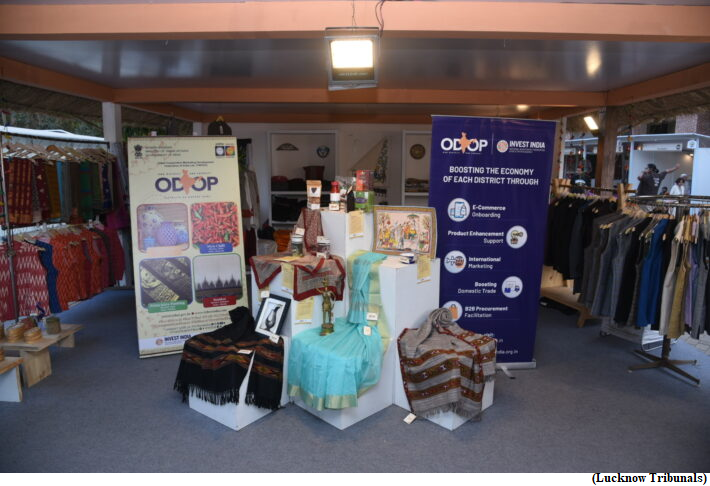TRIFEDs TRIBES India store products tagged with ODOP & GI (GS Paper 3, Economy)

Why in news?
- Recently, the ODOP and GI x TRIFED product launch was held at the Major Dhyan Chand National Stadium, New Delhi during the ongoing Aadi Mahotsav.
ODOP:
- The One District One Product (ODOP) programme under Department of Commerce (DoC) and Department for Promotion of Industry and Internal Trade (DPIIT), Ministry of Commerce & Industry is aimed at creating sustainable employment at the district level while promoting holistic socio-economic development.
- The idea is to select, brand, and promote one product from each district of the country.
- In pursuance of the Prime Minister’s clarion call on Aatma Nirbhar Bharat and with India’s current G20 Presidency, several initiatives are being undertaken by DPIIT.
- In addition, Union Minister of Commerce & Industry, at the launch of the ODOP Catalogue, requested every organisation to work in collaboration with the programme. This will help promote indigenous products from each district of the nation.
Highlights:
- A diverse collection of tribal products representing all parts of the country are available at TRIFED’s TRIBES India Retail store.
- The ODOP and GI tagging was done for a range of products, including Kullu Shawl from Kullu, Himachal Pradesh, Darjeeling Tea from Darjeeling, West Bengal, Blue Pottery from Jaipur, Rajasthan, Bidriware from Bidar, Karnataka, Pattachitra paintings from Puri, Odisha, Bagh Prints from Dhar, Madhya Pradesh, Coffee from Wayanad, Kerala, Bastar Craft from Kondagaon, Chattisgarh & Rice-Jeeraphool from Balrampur, Chhattisgarh. The tagging is intended to create awareness about the sources of products representing different districts of India.
Way Forward:
- ODOP plans to further this campaign by engaging other such stores and emporiums that have overlaps with the products under ODOP to boost the morale of artisans and weaver clusters by giving them a larger platform to display their craft and bringing it to the forefront.
Strawberry farming making waves in tribal land of Odisha
(GS Paper 3, Economy)
Context:
- The strawberry harvest has triggered a celebration in the houses of 10 farmers who live in one of the 56 villages in the tropical deciduous forest of the Sunabeda Wildlife Sanctuary.
- The farmers, who from April to October plant paddy, were initiated into strawberry cultivation in November 2022.
- The rugged Sunabeda plateau, 3,000 feet above sea level, along the Odisha-Chhattisgarh boundary, has always been a difficult terrain to traverse.

Strawberry cultivation:
- The government officers persuaded them to take up this new kind of farming. It provided saplings and financial aid to dig a borewell. Each family has been given 10 acres, and 20,000 saplings planted on each acre.
- The horticulture department was roped in for mulching and drip irrigation. Farmers took loans from women’s self-help groups (SHGs) to fund the labour component.
Chuktia Bhunjia tribe:
- Most people in Sunabeda are from the Chuktia Bhunjia tribe, one of the particularly vulnerable tribal groups (PVTGs).
- They were given the requisite training by the Nuapada district administration and the Chuktia Bhunjia Development Agency (CBDA), set up in 1994-95 by the State government to work for the development of the tribe.
- A CBDA team had gone to Mahabaleshwar in Maharashtra, which accounts for 80% of India’s strawberry production. The altitude and climate there are similar to that of Sunabeda.
Marketing strategy:
- This is not the first time strawberry farming has been experimented within Odisha. The practice had a fair bit of success when it was introduced in 2021 in the Kotia gram panchayat in Koraput district, situated at a similar altitude to Sunabeda, and with a similar climate.
- The area, the jurisdiction of which is claimed by both the Odisha and Andhra Pradesh governments, has seen a huge inflow of government funds over the last four years. Now, the cultivation has spread to 20 acres with seven SHGs involved.



